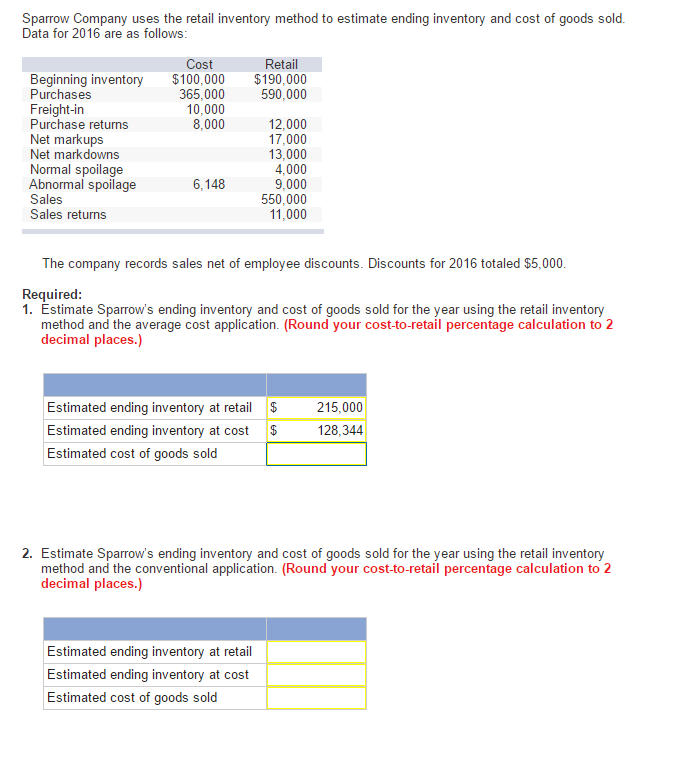
Finally, divide the cost of goods available for sale by the total units available for sale. The following example shows how you can use the periodic average cost method to calculate ending inventory value. This insight also makes it easier to adjust both purchasing management and order management, so inventory levels align with demand without incurring unnecessary costs. By dividing the total cost (£47,000) by the total number of items purchased (80), you arrive at the weighted-average cost per item of £587.50. The Average Cost Method provides a straightforward way to allocate costs, and it tends to smooth out fluctuations in the cost of individual units.
Advantages & Disadvantages of the AVCO Method
The average inventory method is one of the available methods used in inventory management. Clearly the method used to determine which units are sold and which remain in ending inventory determines the value of the cost of goods sold and the ending inventory. As profit depends on the cost of goods sold, the method chosen will affect the profits of a business. It should credit note wikipedia be noted that the above method refers to the use of a weighted average calculation in determining the inventory valuation. In the above example the simple average of the unit costs would be calculated as follows. The calculations used in the average cost method depend on whether the business is using a periodic inventory system of a perpetual inventory system.
Comparing with Other Valuation Methods
In a periodic inventory system, all inventory purchases are initially recorded in the Purchases account, which substitutes for the COGS expense during the period. Each approach detailed above provides a different benefit to any given manufacturer regarding financial reporting, tax obligations, or internal planning. Weighted average costing offers simplistic inventory cost management and is commonly used by many new manufacturers. FIFO offers a company financial reporting that reflects their industry’s current market conditions and is often the choice of a manufacturer dealing with perishable goods. LIFO offers an approach for any manufacturer operating in an inflationary environment looking to minimize their tax liability.
The average cost calculation formula is as follows:
In a perpetual inventory system, a subsidiary ledger is kept for every inventory item. If you do this manually, you need to have a 10-column subsidiary ledger book for every item of inventory. QuickBooks Online is our best small business accounting software and uses the perpetual inventory system to record inventory purchases and sales in the Inventory account.

This principle is in place for the ease of financial statement users so that figures on the financials can be compared year over year. Also referred to as the weighted average cost method, the average-cost method is an accounting formula used when calculating inventory value. This figure is reached by dividing the total cost of goods by the total number of goods over a specific accounting cycle. The average-cost method is simple to use, whether the goods are produced or purchased by the business.
Profit Calculation: Key Factors and Their Impact
This method is commonly used in various industries and suits businesses where specific units are indistinguishable or interchangeable. Explore how the average cost method influences business finances, affecting financial statements, taxation, and industry practices. Since the perpetual inventory system uses a moving average, the ending balances reported under perpetual inventory can differ from periodic inventory. To arrive at this number, we have recalculated the average inventory cost after each addition and applied to each subsequent inventory issue until the next purchase.
Using the information from the previous example, the calculations using the perpetual average cost method are summarized in the following table. In our books, we transfer $7,500 from our inventory account to our COGS account. Then, compute the cost of inventory on hand by subtracting $7,500 COGS from the prior cost of inventory of $12,000. The less inventory you keep on hand, the closer your average cost of inventory will be to the current price of inventory.
- This is because the average cost method processes all costs on a single transaction before distributing them to all items.
- When prices fluctuate, the average cost method offsets the fluctuations and smooths out the price trend.
- In addition to assigning value to the cost of goods sold, it also assigns value to the cost of goods that are still available as inventory.
- This would diminish the accuracy of financial records, reflecting the cost during the specific period, rather than a consistent average.
The above example uses the perpetual method to calculate the average cost. Average costing doesn’t work as well when production costs are trending upward or downward over time. This would diminish the accuracy of financial records, reflecting the cost during the specific period, rather than a consistent average. To calculate the cost of goods still for sale, you would multiply the 30 remaining items by £587.50 average cost, which equals £17,625. Henceforth, it will be easy to manage your inventory as you attract more profits by optimizing the entire process. So, if you are ready, grab a drink, sit, relax, and read this fascinating piece.
A small electronics store starts the month with 50 laptops in inventory, purchased at $800 each. Midway through the month, the store acquires an additional 30 laptops at $900 each. Double Entry Bookkeeping is here to provide you with free online information to help you learn and understand bookkeeping and introductory accounting.
The periodic inventory system requires a physical inventory count at the end of the period. If you’re using the periodic system on a monthly or quarterly basis, you can estimate the units in ending inventory. When prices fluctuate, the average cost method offsets the fluctuations and smooths out the price trend. It removes erratic changes and helps you to report COGS without sudden drops or shoot ups. When prices decline, we expect the average cost to be higher than the actual price.
This method can also be used to determine the average amount invested in each of a group of securities. Doing so avoids the larger amount of work required to track the cost of each individual security. It smooths out the price effects seen in FIFO and LIFO, offering a moderate impact on both COGS and ending inventory valuation. This can be beneficial for companies experiencing frequent price fluctuations. Unlike LIFO, the average cost method is accepted under both International Financial Reporting Standards (IFRS) and U.S.

